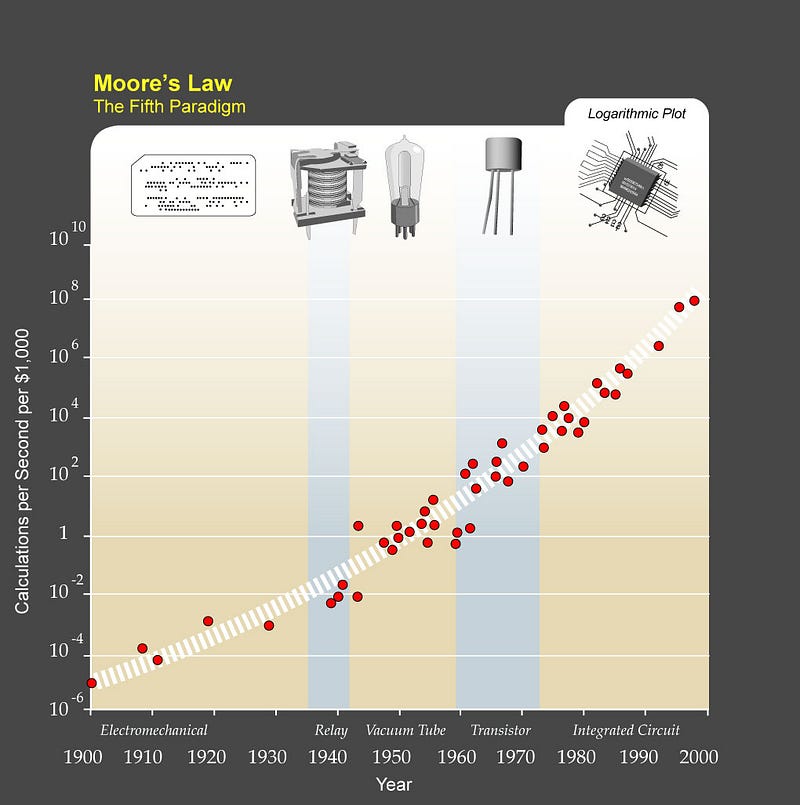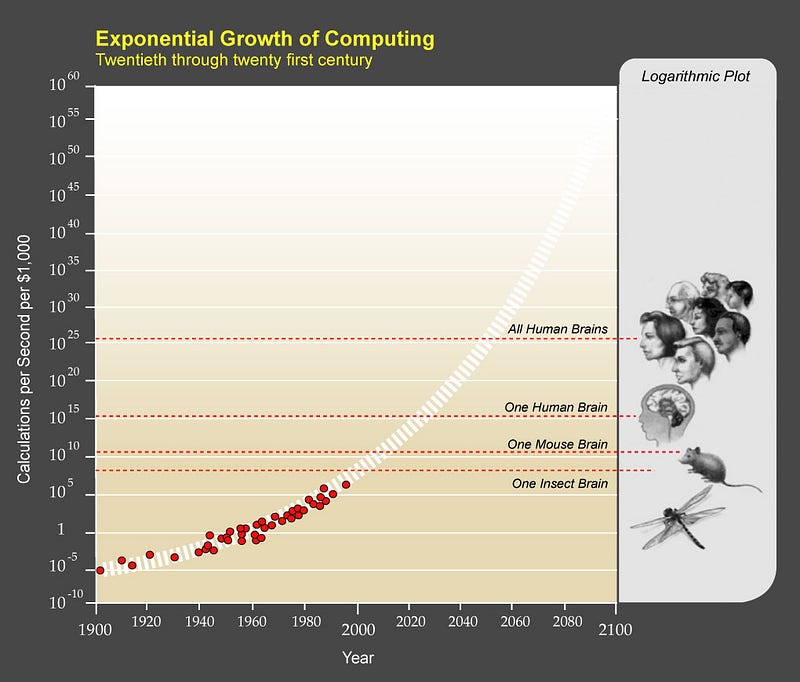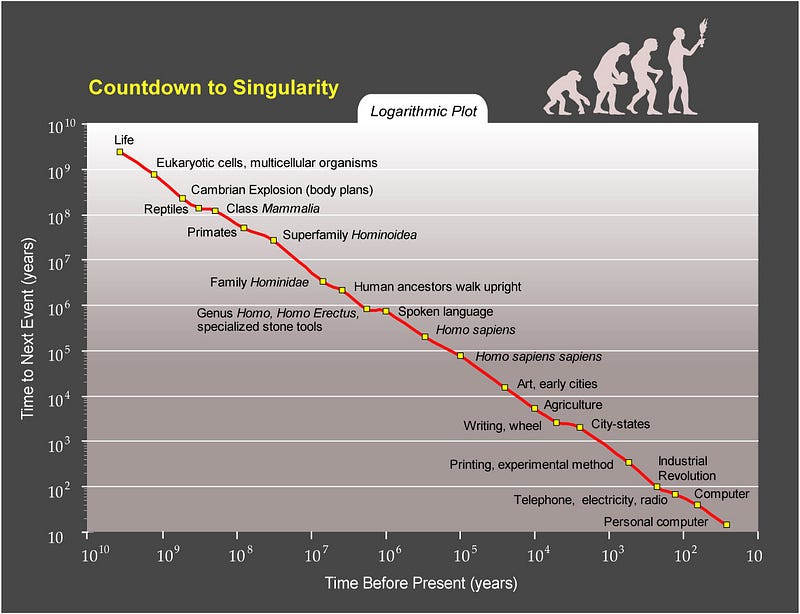The Evolutionary Implications of Moore's Law on Humanity
Written on
Chapter 1: Understanding Moore's Law
In 1965, Gordon Moore, the co-founder of Intel, articulated a concept known as "Accelerating Change," famously referred to as Moore’s Law. This principle asserts that the number of transistors on a compact integrated circuit doubles approximately every two years.
The trend that Moore identified was primarily driven by enhancements in the photolithography techniques used in semiconductor manufacturing. By doubling the resolution of lithography, the transistor count can increase exponentially, leading to a significant rise in computing capabilities.
Within this framework, Moore’s Law serves as an observation linked to a particular manufacturing method, suggesting that this trend was non-existent prior to advancements in photolithography and may eventually cease when we reach a maximum transistor density.

Beyond Moore’s Law: Expanding the Framework
While it is reasonable to attribute Moore’s Law to semiconductor manufacturing processes, this perspective might be too narrow. Futurist Ray Kurzweil has examined over a century of computing trends and discovered that earlier non-transistor computers also fit within the same exponential growth pattern as modern chips.
In his book, The Age of Spiritual Machines, Kurzweil reformulated Moore’s Law into what he called The Law of Accelerating Returns, loosely based on Vernor Vinge’s theory of exponentially accelerating change. Essentially, these concepts imply that the exponential growth in computing power indicated by Moore’s Law is merely a fragment of a broader, exponentially increasing trend.
Kurzweil’s linkage between Moore’s Law and Vinge’s hypothesis represents a significant shift in perspective, as it broadens the concept of accelerating change. However, this separation of observed effects from their established causes raises several challenging questions.
The most pressing inquiry is: if Moore’s Law was propelled by advancements in photolithography for semiconductor circuits, what has been the driving force both before and after the semiconductor era that Gordon Moore initially observed?

The Evolutionary Role of Moore's Law
Kurzweil theorizes that “biological evolution catalyzes technology, which in turn drives computation, leading to Moore’s Law.”
In essence, he posits that Moore’s Law is a singular manifestation of a larger trend toward accelerating intelligence, as measured by computing power. He suggests that this phenomenon is somehow rooted in the process of evolution itself.
If this theory holds true, it implies that the exponential rise in “intelligence” (processing capability) is independent of its substrate. This means it began with the slow evolution of biological systems, transitioned to vacuum tubes, then to transistors, and may eventually leap to Quantum Computers as those earlier technologies reach their limits.
Although this notion is captivating, it may not be without its pitfalls: while the speed of computations in vacuum tubes might surpass that of human synapses, the overall computational capacity of the devices containing them is considerably lower.
Nonetheless, Kurzweil’s graphing of eons of evolutionary progress reveals a compelling trend that could indicate more than mere optimism.

Is AI a New Form of Life?
If Kurzweil's assertions are accurate, the biological evolution of life appears to follow a long-standing pattern of exponential complexity growth, culminating in machine intelligence and potentially leading to a "Technological Singularity," where machines surpass human intelligence levels.
Kurzweil himself has suggested that evolution may be transitioning toward a new substrate for life, much like how chip designers moved from vacuum tubes to transistors in previous decades. While this idea resembles the notion of “intelligent design,” it also raises the possibility that if evolution is behind this development, it could give rise to a new form of life.
This would mark a significant milestone, as it would be the first instance on Earth where we could identify a new type of silicon-based life, fundamentally different from the carbon-based life that has evolved for millions of years.
The Potential End of Human Supremacy?
Futurists, including Nick Bostrom, Stephen Hawking, Bill Gates, and Elon Musk, have voiced concerns about AI posing an existential risk to humanity, and the Singularity is a major reason for their apprehension.
Conversely, Kurzweil maintains an optimistic outlook, suggesting that rather than being replaced by intelligent machines, humanity will eventually merge with them, forming a new species capable of existing in both carbon and silicon environments.
Recent advancements in artificial limbs, cochlear implants, and brain-computer interfaces lend credibility to Kurzweil’s perspective. While machine intelligence may initially seem like a separate entity from its creators, rapid progress in cybernetics indicates that this division may not persist for long.